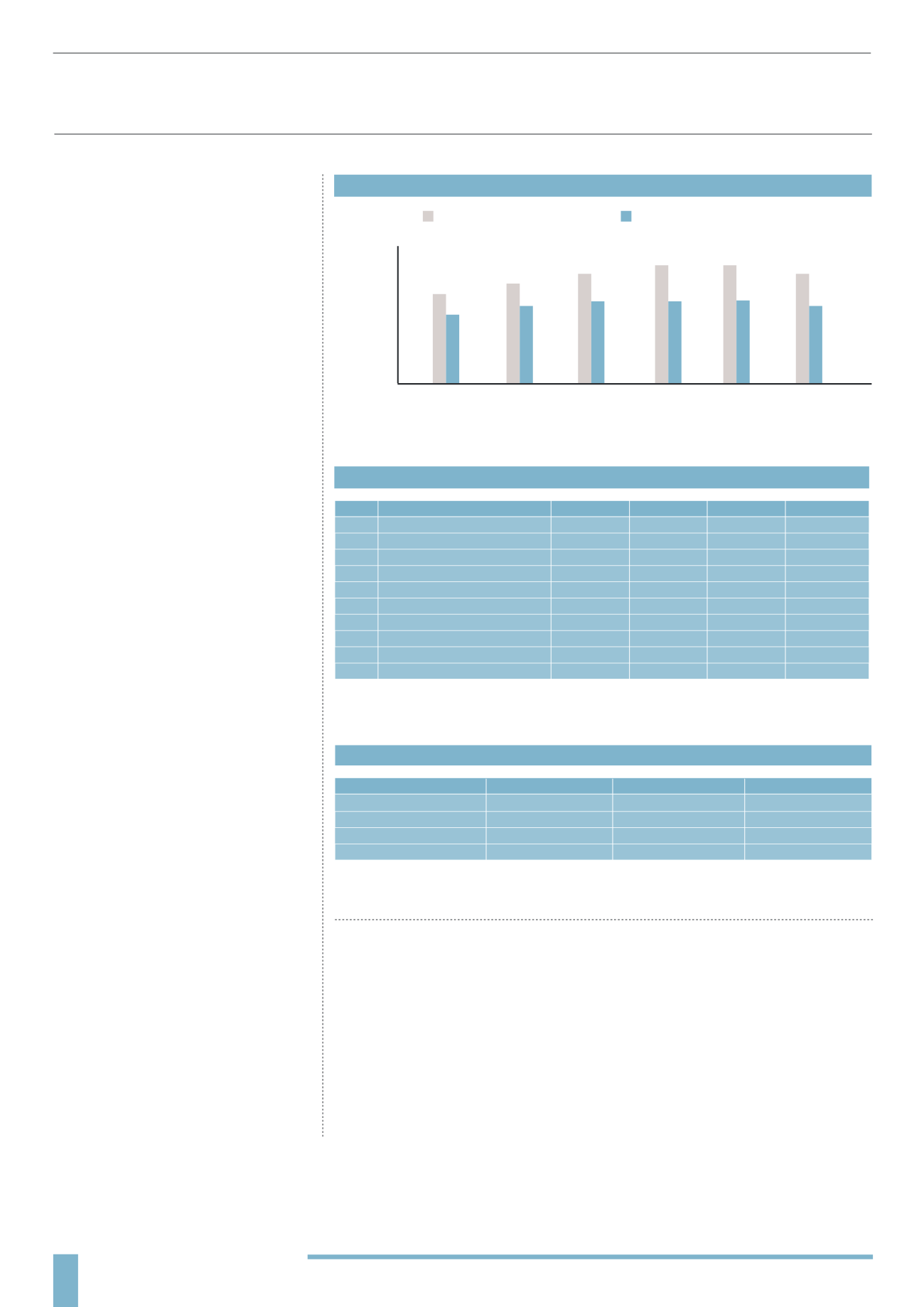
8
The top 10 universities in the UK have all brought in the £9,000 tuition fee apart from the London
School of Economics who cap their fees for UK students at £8,500. For international students fees
can vary more widely with Cambridge charging over £30,000 a year for some courses.
Whilst total university applications declined in 2012, applications to the best universities – those
in the Russell Group and the 1994 Group – remained strong with demand outstripping supply.
Demand also remains high for courses with a track record of high employability.
Universities that are expected to suffer from the increased fees are those with lower rankings
and reputations who will struggle to attract students. This is already evident, with a fall in
applications of over 15% at many of the UKs lowest ranking universities.
Institution
University of Cambridge
University of Oxford
London School of Economics
University of St Andrews
The University of Warwick
University College London
Durham University
Lancaster University
University of Bath
University of Exeter
Rank
1
2
3
4
5
6
7
8
9
10
TOP
10
UK UNIVERSITIES AND FEES
Source: Guardian University Guide 2013
UK/EU min
£9,000
£9,000
£8,500
£9,000
£6,000
£9,000
£9,000
£9,000
£7,500
£9,000
UK/EU max
£9,000
£9,000
£8,500
£9,000
£9,000
£9,000
£9,000
£9,000
£9,000
£9,000
Non-EU min
£13,011
£13,200
£15,168
£14,450
£13,800
£14,000
£12,600
£12,070
£10,500
£12,600
Non-EU max
£31,494
£27,550
£15,168
£22,000
£28,080
£28,500
£16,100
£15,350
£15,700
£14,500
Domicile of Student
England
Scotland
Wales
International (Non-EU)
Studying in England
Up to £9,000
Up to £9,000
Up to £3,465
Up to £33,000
UK ANNUAL TUITION FEES
Source: UCAS
Studying in Scotland
Up to £9,000
No Fee
Up to £3,465
Up to £28,500
Studying in Wales
Up to £9,000
Up to £9,000
Up to £3,465
Up to £26,500
DEMANDvs
.
SUPPLY
800,000
600,000
405,000
200,000
0
DEMAND VS SUPPLY
TOTAL APPLICATIONS
2007/08 2008/09 2009/10 2010/11 2011/12 2012/13
TOTAL ACCEPTANCES
Demand for university places continues to
outstrip supply. Based on total applicants
versus total acceptances from 2007 to 2013,
demand has been much higher than supply
and has increased over the period. In the
current academic year there were 188,000
more applicants than acceptances, just over
9% down on last year and 10% down on the
high of 210,022 seen in 2010/11. Based on
this it would be possible for applications
to drop by over 20% before it would have
a significant impact on the number of
acceptances. (Although it is worth noting
that not all applicants will accept their places
at university and may choose other routes
such as full-time employment).
WILL TUITION FEE INCREASES
HAVE AN IMPACT?
In 2010 the UK Government agreed reforms
to higher education funding on the back of
recommendations from the Lord Browne
review. The Government implemented
funding cuts and allowed universities to
increase their undergraduate tuition fees
from £3,225 to between £6,000 & £9,000
per year starting from 2012/13. The revised
funding system is expected to allow for a
10% increase in university places over the
next three years.
These changes mean that British and EU
students starting a 3 year undergraduate
degree in September 2012 could graduate
owing fees of up to £27,000. When you add
to this the maintenance loans to fund the
cost of living then some students could
be leaving with debts of £50,000. These
changes could be seen as a graduate tax as
students are not required to pay back tuition
fee loans until they earn more than £21,000
a year.
Further increases in tuition fees are
predicted, with recent data from the
Government showing that 64 out of
122 institutions plan to raise fees for
undergraduate courses with the average
price predicted to rise from £8,385 (2012/13)
to just over £8,500 per year (2013/14).
(2013)
(2013)
(2007 - 2013)


